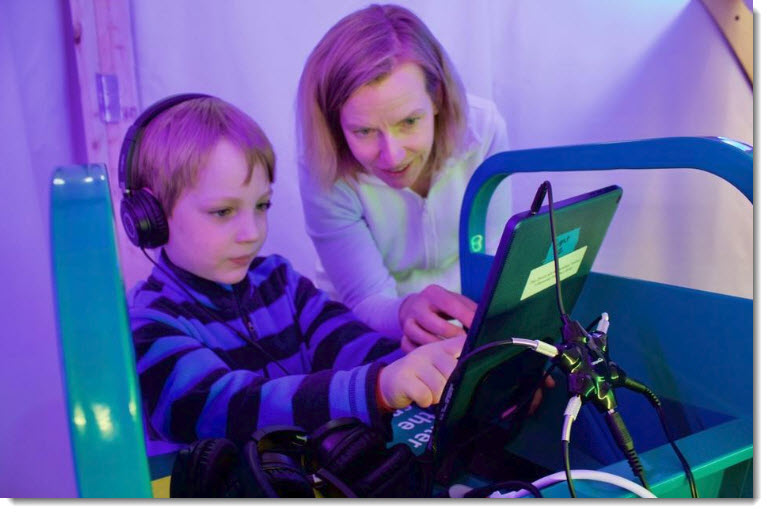Cambridge library installation gives readers control of their sensory space — from cambridge.wickedlocal.com by Hannah Schoenbaum
Excerpts:
A luminous igloo-shaped structure in the front room of the Cambridge Public Library beckoned curious library visitors during the snowy first weekend of March, inviting them to explore a space engineered for everyone, yet uniquely their own.
Called “Alterspace” and developed by Harvard’s metaLAB and Library Innovation Lab, this experiment in adaptive architecture granted the individual control over the sensory elements in his or her space. A user enters the LED-illuminated dome to find headphones, chairs and an iPad on a library cart, which displays six modes: Relax, Read, Meditate, Focus, Create and W3!Rd.
From the cool blues and greens of Relax mode to a rainbow overload of excitement in the W3!Rd mode, Alterspace is engineered to transform its lights, sounds and colors into the ideal environment for a particular action.
From DSC:
This brings me back to the question/reflection…in the future, will students using VR headsets be able to study by a brook? An ocean? In a very quiet library (i.e., the headset would come with solid noise cancellation capabilities build into it)? This type of room/capability would really be helpful for our daughter…who is easily distracted and doesn’t like noise.









